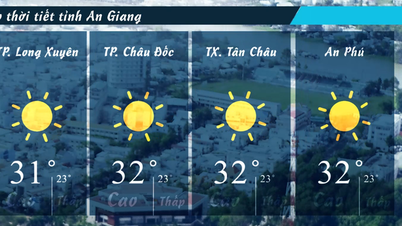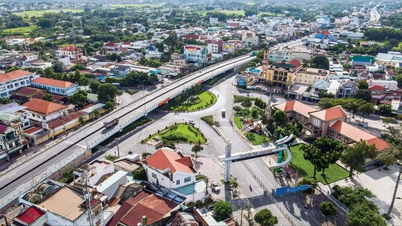Historically, provincial mergers in Vietnam were mainly administrative in nature - to adjust the state apparatus to suit the specific conditions of each period.
However, the current reform has a completely different nature: it is no longer aimed at simplifying management, but at restructuring the national development institution. For the first time, the reorganization of administrative space is approached as a tool for development creation - an institutional push, not a purely administrative solution. This is a fundamental change in thinking: from "governance by territory" to "governance by development dynamics".
The provincial/municipal arrangement sets out a vision that goes beyond the old boundaries of localization, paving the way for the formation of regional administrative units capable of assuming the role of a hub connecting large-scale infrastructure, cross-provincial supply chains, integrated industrial-service spaces, and institutions capable of leading development. In an era where national competitiveness is closely linked to institutional governance capacity, the provincial/municipal arrangement is a proactive step for Vietnam to upgrade its administrative system to a new level: from management to creation; from administration to strategy; from division to integration.
Previously, dividing provinces was considered reasonable in the context of difficult transportation and dispersed staff. However, after decades of innovation and integration, the model of "one administrative center per province" has revealed many shortcomings.
First, resources are severely fragmented. Each province is like a separate “oasis”, each doing its own planning, attracting investment, and developing infrastructure without regional coordination. The result is overlapping projects, fragmented infrastructure, and lack of connectivity.
Second, the cumbersome administrative structure makes operating costs increasingly high; the budget is inflated by a "bloated" but inefficient apparatus.
Third, local thinking and localism have silently penetrated the system; the mentality of keeping people, keeping power, keeping parts... reduces the overall effectiveness of management and hinders regional connectivity.
Meanwhile, successful countries do not develop according to administrative boundaries, but according to economic dynamic regions, where urban areas, seaports, technology zones, logistics, etc. are effectively connected and coordinated. If Vietnam continues to maintain the provincial model, it will have difficulty attracting large investments, building value chains and entering the global playing field.
The arrangement of provinces/cities is an act of “combining strength” - from population size, development space, to management institutions and competitiveness. A large province after merger will have a larger market, stronger revenue, more synchronous infrastructure, thereby creating leverage to attract strategic investors, forming a new growth pole.
Not only that, merging provinces will help streamline the administrative apparatus: fewer focal points, shorter management levels, faster decision-making; the government will have more conditions to focus on strategic planning, macro-management and better serve the people and businesses.
The merger also removes the “invisible walls” that have long hindered regional connectivity. With larger provinces, regional policy coordination, budget allocation and project implementation become much more unified and efficient.
Each province after the arrangement is an organic link in the national value chain, which needs to be built according to the logic of economic - social - ecological development, instead of simply following the old boundaries. A modern province can include seaports, industrial belts, high-tech agricultural zones, research centers, ecological conservation areas, etc. operating under a unified coordination system.
Then, policies will be designed more flexibly, government responses will be faster, and people will be served more effectively. In the long term, this will be the foundation for Vietnam to build an administrative institution that adapts to the future - where the government is large enough to plan at the macro level, smart enough to allocate resources, and flexible enough to adjust to reality.
In short, the arrangement of provinces/cities is a concrete action to create a Vietnam that is big enough, fast enough and sustainable enough. Only with strong administrative units, a streamlined apparatus, deep regional connections and adaptive institutions can we realize the aspiration of strong development in the 21st century.
Source: https://www.sggp.org.vn/mo-duong-cho-mot-viet-nam-hung-cuong-post799254.html





























![[Photo] The 9th Congress of the Party Committee of the Office of the President, term 2025-2030](https://vphoto.vietnam.vn/thumb/1200x675/vietnam/resource/IMAGE/2025/6/20/78e7f27e8c4b4edc8859f09572409ad3)


























![[Maritime News] Wan Hai Lines invests $150 million to buy 48,000 containers](https://vphoto.vietnam.vn/thumb/402x226/vietnam/resource/IMAGE/2025/6/20/c945a62aff624b4bb5c25e67e9bcc1cb)










































Comment (0)